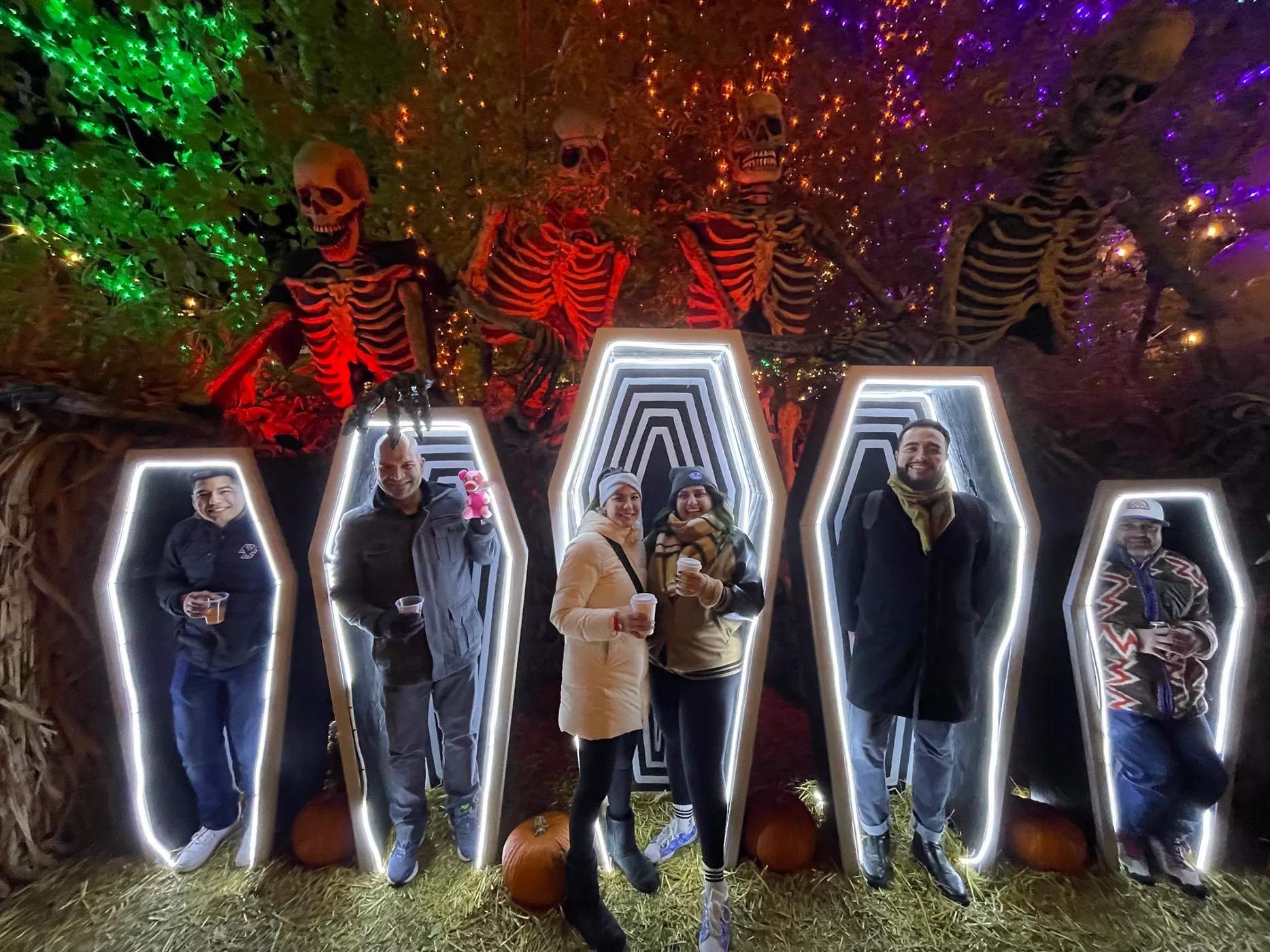Q&A with Reedhima Mandlik: Founder of Slalom Hacktober

A senior analyst talks about Hacktober, hedgehogs, and her journey to tech.
How did you get the idea for Slalom’s Hacktober celebration?
It started while I was at my first tech internship job. A person I worked with ran many of the security initiatives there. She was heading up something they called Hacktober—but it was so different. It focused on fear and catching employees in a mistake—or even breaking into the company’s headquarters! I envisioned a more fun, collaborative experience—like finding bugs and identifying phishing emails.
I brought my idea up to Michele Bleser, our VP of IT, who leads the Women in Tech group at Slalom. I said, “Hey, it would be really cool if we could create a program that focuses on cybersecurity in a way that’s fun—not fearful.”
What attracted you to Slalom?
I had previously been at a startup and was doing all the product marketing. I knew I didn’t want to do it anymore—I wanted to work in true product, but I didn’t know what kind I was interested in. My friend worked here, and she said, “Well, I think you’d be a really great fit.”
Consulting is a great way to get to know different tech stacks and different types of technology, and learn what you like. But the reason I picked Slalom was because of the culture. Everyone I met was so kind.
How has your role in Hacktober evolved?
At the beginning it felt like a scrappy startup. A few other folks I knew from Technology Enablement in Chicago helped me out. We all believed in it, and we built this huge thing out of thin air. Last year was the first year we had a full-on platform of events. For the first time, I was running a global program! I learned so much leading 60 market leads.
This year my goal was for everyone building the Hacktober site to try something new, or something that they’ve always wanted to do. Oftentimes on client projects you have to do the work that’s in the area of your expertise. It’s very difficult to be able to try new things and fail fast when you’re on a client project, because there isn’t really room for it. But with Hacktober, I’m able to operate it like a startup. You can try new things, test out cool stuff, and if it doesn’t work, it’s fine.
It’s so interesting that you have two journalism degrees and you went into tech.
For my master’s in journalism, I specialized in media innovation and entrepreneurship—it was basically UX/UI research, startup development, and product management—oddly, very little to do with journalism. But it worked out really well. It’s what led me here.
I thought I was going to be a tech journalist. I really wanted to work at TechCrunch or something like that. Then, in my last quarter of getting my undergrad degree in journalism and psychology, I interned at a tech company—that was when I realized you can work in product and that you don’t have to know how to code.
Describe your perfect weekend day.
Wake up really late. Have pancakes for breakfast because that’s the best kind of breakfast. See my friends, whether that’s going apple picking, which is what I’m doing this weekend, or going to a haunted house, or anything that’s exciting in Chicago. Then coming back to my hedgehog—she’s very sweet—and snuggling with her while watching some K-dramas, and then playing some video games before going to bed.
Hedgehogs are snuggly?
If they like you, they are. They’re very consent-based animals, so you really have to earn their trust. Her name is Kupo—it comes from Final Fantasy VII.
Have you had any great mentors in your life? How have they influenced you?
One of my best mentors is here at Slalom—Michele Bleser. She’s been one of my greatest advocates, and she’s also the kind of person I can talk to about things going on in my life or things happening with my career. She’ll give me a straightforward, honest answer every single time. She’s someone who really believes in building people up. She’s amazing.
What about books or thought leaders?
I’m a very imaginative person and I love fiction writing. I always learn my lessons best when they come from a fictional place, because fiction teaches you about people and life in a way that’s different from a self-help book. My favorite book of all time is The Name of the Wind, by Patrick Rothfuss. It’s an incredible story focused on perseverance. It’s helped me through a lot, and it’s beautifully written.
What’s been the best and worst part of being a woman in tech?
The best part of being a woman in tech is that because you’re a minority you feel a responsibility to help lift other people up. The idea of women in technology should not be a rarity for the generation after me, and for the generation after that it should be the norm.
I have a chance to make that change, but the hardest part is that it feels like I have to be the one to make that change. So it’s kind of a double-edged sword, right? You get to be able to influence and change the world, but at the same time it’s a huge burden to bear. And it’s really difficult unless you have other women helping you out, or you have allies. I’m grateful to have that at Slalom.
What’s your experience been like negotiating being a woman and a woman of color in tech?
It adds another layer of complexity. My name isn’t Ashley. Or Jane. It’s not easy to pronounce. It takes effort. But I deserve to have my name pronounced correctly.
A woman outside Slalom once wanted to talk to me and another Women in Tech lead about potentially being on a panel. When we met she went on and on about “offshore folks” working with her, talking down about them. And I said, “Hey, you know I’m Indian, right? You can’t say that about people.” She said, “You’re not Indian. You have green eyes, your skin’s a different color. You’re not Indian.”
I told her there are lots of different skin tones and eye colors in India, and that my hair is blond because I dye it blond. She kept insisting I wasn’t Indian and then she committed another microaggression toward my colleague, who also happens to be a woman of color. We declined her offer—I’m glad Slalom supports us in never having to work with her. These kinds of interactions are just another layer of struggle that we have to go through.
That’s a great quote—“My name isn’t Ashley.”
I grew up thinking, “I wish my name were easier to pronounce.” I’m unlearning a lot of internalized racial oppression that I grew up with. I’m grateful that Slalom takes these situations so seriously and that I do feel supported by my peers when it does happen.
What’s your favorite part of your job and why?
My favorite part of my job is being able to build up a team from scratch and create that team culture every single time. I figure if someone isn’t happy, then working is going to be infinitely harder for everyone. Every time I get on a new project, being able to create that sense of family and camaraderie with people is truly my favorite part.
